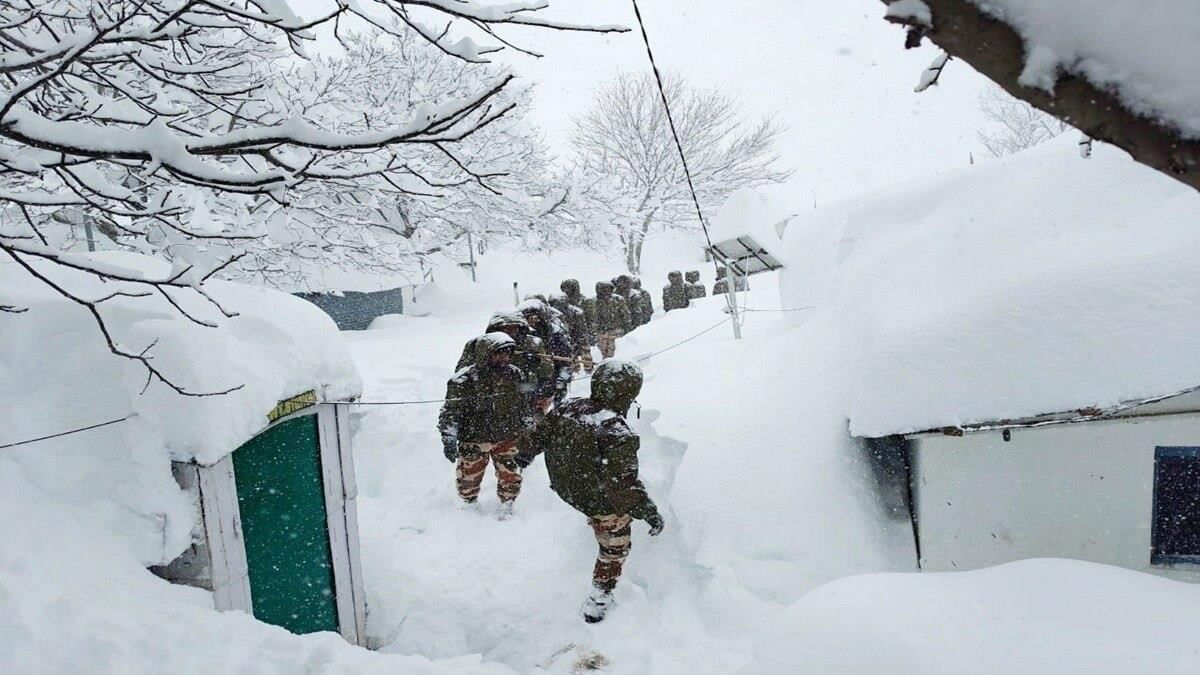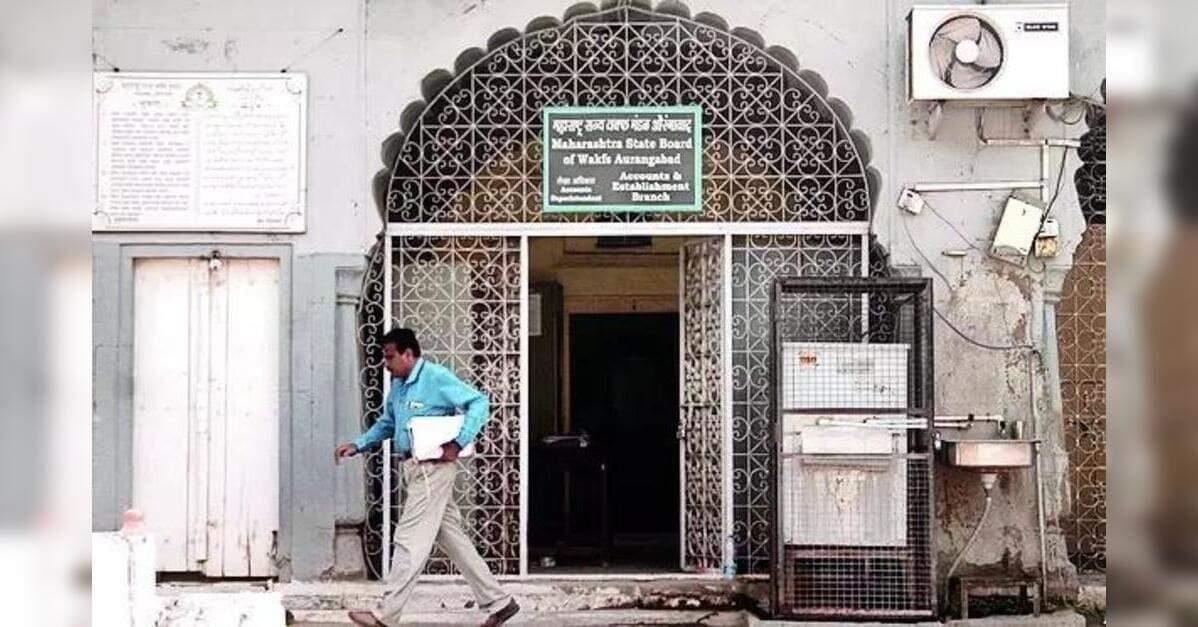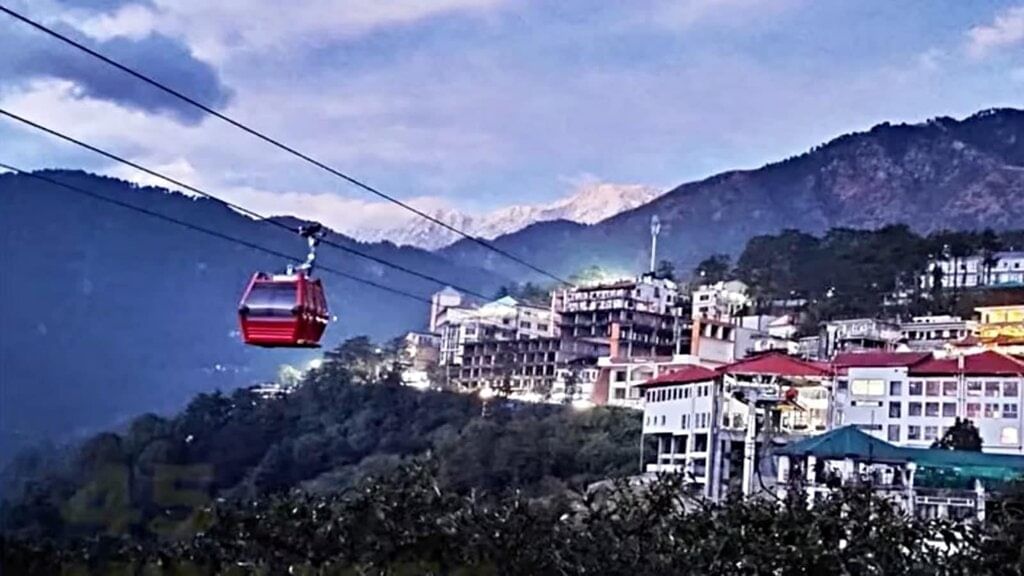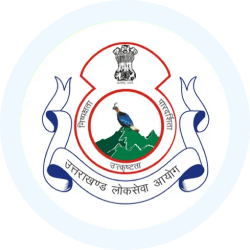UKPSC Monthly Current Affairs: March 2025 | Monthly Current Affairs UKPSC - UKPSC (Uttarakhand) PDF Download
Avalanche Warning in Uttarakhand
 Avalanche Alert
Avalanche Alert
Why is it in the News?
The Defence Geoinformatics Research Establishment (DGRE) has alerted about the possibility of avalanches in high-altitude regions across five districts in Uttarakhand.
Recent Avalanche Incident:
- An avalanche struck Mana in Chamoli district, close to the Indo-China border, resulting in the tragic death of eight contractual workers from the Border Roads Organisation (BRO).
Avalanche Alerts:
- Chamoli: An orange alert has been issued, indicating a high risk of avalanches.
- Uttarkashi, Pithoragarh, and Rudraprayag: yellow alert has been issued for these districts, indicating a moderate risk.
- Bageshwar: green warning has been issued, indicating a low risk of avalanches.
Recent snowfall has led to increased snow accumulation on slopes, significantly raising the risk of avalanches in these areas.
Safety Recommendations:
- The DGRE advises limiting movement to safer and well-considered routes through valleys.
- Extreme caution is urged while travelling, and people are warned against venturing onto snow-covered slopes.
- Authorities recommend evacuating unprotected settlements near areas prone to avalanches.
About the Defence Geoinformatics Research Establishment (DGRE):
- DGRE is the sole establishment within the Defence Research and Development Organisation (DRDO) that provides advanced terrain intelligence solutions to the Armed Forces.
- The focus of DGRE is on mapping, forecasting, monitoring, controlling, and reducing landslides and avalanches in the Indian Himalayas.
- Established on November 15, 2020, DGRE was formed by merging two prominent DRDO labs:
- Snow & Avalanche Study Establishment (SASE), Chandigarh
- Defence Terrain Research Laboratory (DTRL), Delhi
- The headquarters of DGRE is situated in Chandigarh.
Research and Meteorological Centres:
- DGRE operates five Research & Development Centres (RDCs) located in:
- Manali (Himachal Pradesh)
- Tezpur (Assam)
- Tawang (Arunachal Pradesh)
- Lachung (Sikkim)
- Additionally, DGRE has three Mountain Meteorological Centres (MMCs) positioned in:
- Srinagar (Jammu & Kashmir)
- Auli (Uttarakhand)
- Sasoma (Ladakh Union Territory)
Objectives of DGRE:
- To ensure the safe movement of troops in challenging terrains.
- To evaluate the military potential of various terrains using modern assessment techniques.
Mission Priorities of DGRE:
- Geospatial Information System: Develop a system for operational planning and military intelligence.
- Engineering Solutions: Provide advanced engineering solutions to ensure safe troop movement, particularly in areas susceptible to avalanches and landslides.
- AI-Enabled Systems: Create intelligent, AI-powered solutions for optimized deployment and operational efficiency.
Understanding Avalanches:
An avalanche refers to a sudden and rapid movement of snow, ice, and debris down a mountain or slope. Various factors can trigger avalanches, including heavy snowfall, rapid temperature changes, or human activities. In regions prone to avalanches, specialized teams monitor and manage avalanche risks using methods such as explosives, snow barriers, and other safety measures.
Different Types of Avalanches:
- Rock Avalanches: These involve large segments of shattered rock falling down the slope.
- Ice Avalanches: These typically occur in areas close to glaciers where large masses of ice break off and slide down.
- Debris Avalanches: These consist of various unconsolidated materials, including loose stones, soil, and other debris sliding down the slope.
Uttarakhand CAMPA Funds
Why in News?
The Supreme Court of India looked into the response from Uttarakhand and found the Uttarakhand Forest Department's use of funds from the Compensatory Afforestation Fund Management and Planning Authority (CAMPA) to be minor.
Key Points
- Allegations Based on CAG Report:
- The Supreme Court asked for a reply from the Uttarakhand Chief Secretary regarding claims from a Comptroller and Auditor General (CAG) report that is public.
- The report stated that the Forest Department improperly used CAMPA funds to buy electronic devices, such as iPhones and laptops.
- Only 1.8% of the total CAMPA funds were said to be misused.
- Directive on Interest Deposit Compliance:
- The Court directed Uttarakhand to timely deposit interest with the State Compensatory Afforestation Funds (SCAF) as per the Compensatory Afforestation Fund Act, 2016.
- The CAG report highlighted non-payment of Rs 275.34 crore in interest between 2019-20 and 2021-22, despite multiple requests from CAMPA authorities.
The Comptroller and Auditor General
- The Comptroller and Auditor General (CAG) of India is the leader of the Indian Audit and Accounts Department (IA-AD), as stated in Article 148 of the Constitution.
- The main duty of the CAG is to protect public funds and manage the financial system for both the central and state governments.
- The CAG ensures that the Constitution and laws made by Parliament are followed in financial management.
- The CAG is regarded as one of the key parts of India's democratic framework, similar to institutions like the Supreme Court, Election Commission, and Union Public Service Commission.
- The role of the CAG is defined by the Comptroller and Auditor-General's (Duties, Powers and Conditions of Service) Act, which was established in 1971 and has undergone important changes in 1976, 1984, and 1987.
Compensatory Afforestation Fund
- The CAF Act was introduced by the government in 2016, with related rules established in 2018.
- This act was created to handle the money collected for compensatory afforestation, which was previously managed by a temporary organization called the Compensatory Afforestation Fund Management and Planning Authority (CAMPA).
- Compensatory afforestation means that whenever forest land is used for purposes other than forestry, like mining or industry, the organization using the land must pay to plant trees on an equal area of non-forest land. If non-forest land isn't available, they have to plant trees on twice the amount of degraded forest land.
- According to the rules, 90% of the money from the CAF goes to the states, while the remaining 10% is kept by the central government.
- The funds can be used for various purposes, including:
- Treatment of catchment areas
- Assisted natural regeneration
- Forest management
- Wildlife protection and management
- Relocating villages from protected areas
- Managing conflicts between humans and wildlife
- Training and raising awareness
- Providing wood-saving devices and related activities
Uttarakhand Government Seals Multiple Madrasas
 Madrasas SealedMadrasas Minority religious institutions The Uttarakhand government has sealed 52 madrasas across the state. Muslim organisations have criticised this action against madrasas.
Madrasas SealedMadrasas Minority religious institutions The Uttarakhand government has sealed 52 madrasas across the state. Muslim organisations have criticised this action against madrasas.
Madrasas Sealed Across the State:
- Government officials stated that illegal and unauthorised construction was the main reason for the closures.
- Some madrasas were found to be unregistered and operating without recognition.
- In January 2024, following orders from the State Chief Minister, the government started an identification drive targeting minority institutions.
Encroachment
- The Chief Minister reaffirmed the commitment to take action against illegal construction and encroachments.
- In 2023, a statewide campaign was launched against illegal encroachments on forest land.
- Over 450 madrasas and 50 temples were demolished across Uttarakhand due to illegal construction.
The term madrasa is derived from Arabic and refers to an educational institution. Initially, madrasas were established as educational centres in early Islam, but by the 10th century, they had developed into important places for both religious and secular education in the Islamic world.
Khorasan
- The first madrasas were located in Khorasan and Transoxania (which includes modern eastern and northern Iran, central Asia, and Afghanistan), with larger institutions providing accommodation for students, particularly those from disadvantaged backgrounds.
- Some recognised madrasas include Darul Uloom Nadwatul Ulama and Darul Uloom Deoband.
- Recognised madrasas are overseen by state boards, while unrecognised ones follow curricula from major seminaries.
- Encroachment refers to the unauthorised use or occupation of someone else’s property. This can happen on abandoned or unused spaces if the legal owner is not actively involved in maintaining it. Property owners should be aware of their legal rights and the steps they can take in such situations.
- Urban encroachment involves the unauthorised occupation or use of land within urban areas. This can include illegal construction, squatting, or any other form of occupation without the required permission.
- Land encroachment, as defined by Section 441 of the Indian Penal Code (IPC), 1860, refers to unlawfully entering someone else’s property without permission to commit an offence, threaten possession of the property, or remain on the land uninvited.
Uttarakhand's Pioneering Nanofabrication Facility at IIT-Roorkee
IIT-Roorkee has established a cutting-edge nanofabrication facility in Uttarakhand to advance semiconductor manufacturing and support various high-tech research areas.
International Collaboration
- Knowledge Sharing: IIT-Roorkee collaborated with renowned semiconductor institutions in Taiwan to exchange expertise and best practices.
- Project Funding: The initiative, funded by the Department of Science and Technology (DST), commenced in 2019, aiming to boost semiconductor research and development in India.
State-of-the-Art Infrastructure
Advanced Instruments: The facility boasts cutting-edge equipment, including:
- 50 kV Electron Beam Lithography (EBL) system capable of 10nm resolution, enabling precise patterning at the nanoscale.
- Inductively Coupled Plasma Reactive Ion Etching (ICP-RIE), a crucial technology for etching intricate patterns in semiconductor materials.
- Ultra-Clean Rooms: The facility includes ultra-clean rooms with meticulously controlled environments to ensure the integrity of sensitive experiments:
- Class 100 space (300 sq ft) for highly sensitive research requiring minimal contamination.
- Class 1000 space (600 sq ft) for less stringent but still controlled research conditions.
Research Applications
The nanofabrication facility at IIT-Roorkee supports innovative research in various cutting-edge fields, including:
- Quantum Sensors: Devices that exploit quantum phenomena to measure physical quantities with high precision.
- Spintronics: Technology that utilizes the spin of electrons, in addition to their charge, for information processing and storage.
- Memory Devices: Advanced storage solutions with improved speed and capacity.
- Thin-Film Devices: Applications involving thin layers of materials with unique properties for electronics and optics.
- Photodetectors: Sensors that detect light and convert it into electrical signals for various applications.
- Quantum Optics: The study of quantum effects in optical systems, with applications in communication and sensing.
- Photonic Crystals: Optical materials with periodic structures that affect the motion of photons, used in sensors and lasers.
About the Department of Science and Technology (DST)
- Establishment: The DST was founded on May 3, 1971, inspired by the National Science Foundation (NSF) in the United States.
- Role and Functions: The DST plays a crucial role in funding scientific research, formulating policies, and coordinating scientific activities with other countries.
- Empowering Scientists: The department empowers scientists and research institutions, collaborating with a wide network that includes schools, colleges, PhD and postdoctoral researchers, young scientists, startups, and NGOs involved in science and technology.
- Budget and Programmes: The DST’s budget has significantly increased since its inception, allowing the launch of new programmes across various fields of science and technology.
Lakhpati Didi Yojana in Uttarakhand
 Women Empowerment
Women Empowerment
The Lakhpati Didi Yojana is an initiative under the National Rural Livelihood Mission (NRLM) aimed at empowering women in rural areas.
Progress Towards Targets:
- Udham Singh Nagar district is leading with 25,918 women becoming Lakhpati Didis, close to the target of 27,285.
- Haridwar follows with 21,442 women, aiming for 23,588.
- Other districts like Pauri, Almora, and Tehri have also shown significant progress.
Entrepreneurial Opportunities for Rural Women:
- Value addition of coarse grains and fruits.
- Dairy farming and distribution.
- Providing primary veterinary care and insurance schemes, earning commissions.
- Engaging in digital transactions, which enhance household incomes.
The NRLM has made a substantial impact on women’s empowerment by providing financial stability, self-reliance, and improved livelihoods.
Lakhpati Didi Initiative
- A “Lakhpati Didi” is a member of a Self-Help Group (SHG) who has successfully achieved an annual household income of Rupees One Lakh or more, maintained over at least four agricultural seasons or business cycles, ensuring an average monthly income exceeding Rupees Ten Thousand (Rs. 10,000).
Deendayal Antyodaya Yojana- National Rural Livelihoods Mission (DAY-NRLM)
- This initiative, launched by the government, encourages each SHG household to undertake multiple livelihood activities along with value chain interventions, leading to a sustainable income of Rs. 1,00,000 or more yearly.
Purpose:
- The initiative aims to empower women by enhancing their income and transforming their lives through sustainable livelihood practices.
- These women serve as inspiring role models in their communities, showcasing effective resource management and entrepreneurship.
National Rural Livelihood Mission
- This is a centrally sponsored programme initiated by the Ministry of Rural Development in June 2011.
Aim:
- Its goal is to eradicate rural poverty by promoting multiple livelihoods and improving access to financial services for impoverished rural households across the country.
Functioning:
- The programme works with community institutions through community professionals, embodying the spirit of self-help, which is a unique aspect of DAY-NRLM.
- Self-Help Groups (SHGs) enhance livelihoods through widespread social mobilization.
- They organise one woman from each rural poor household for training and capacity building.
- They facilitate micro-livelihood plans and help implement them by accessing financial resources from their institutions and banks.
Approved Ropeway Projects in Uttarakhand
 Ropeway Developments
Ropeway Developments
On 5th March 2025, the Cabinet Committee on Economic Affairs (CCEA), led by the Prime Minister, gave the green light to two significant ropeway projects in Uttarakhand.
Overview of the Ropeway Projects
- The ropeways will link Sonprayag to Kedarnath and Govindghat to Hemkund Sahib.
- These projects are part of the National Ropeways Development Programme, with an estimated cost of Rs 7,000 crore.
- The ropeways aim to significantly reduce travel time to pilgrimage sites located over 3,500 meters above sea level.
Details of the Ropeway Projects
Govindghat to Hemkund Sahib Ropeway
- Length: 12.4 km
- Cost: Rs 2,730.13 crore
- Development Mode: Design, Build, Finance, Operate, and Transfer (DBFOT) under a public-private partnership (PPP)
- Current Trek:. challenging 21-km uphill trek from Govindghat to Hemkund Sahib, which takes place on foot, by pony, or by palanquin.
- Expected Benefits:
- Simplifies travel for pilgrims, especially since the Gurdwara is open only five months a year (from May to September).
- Approximately 1.5 to 2 lakh pilgrims visit Hemkund Sahib annually.
- Benefits tourists visiting the Valley of Flowers, a UNESCO World Heritage Site.
Sonprayag to Kedarnath Ropeway
- Length: 12.9 km
- Cost: Rs 4,081.28 crore
- Time Reduction: Reduces travel time from 8-9 hours to just 36 minutes.
- Current Travel Methods: Pilgrims currently use helicopters, ponies, or walk a 16-km uphill path from Gaurikund to Kedarnath.
- Significance: Kedarnath Temple is one of the 12 Jyotirlingas in the Char Dham Yatra and is among the most visited temples in this pilgrimage circuit.
Economic and Tourism Impact of the Ropeway Projects
- Job Creation: These projects are expected to generate numerous job opportunities during both the construction and operational phases.
- Support for Local Industries: The ropeways will benefit various local industries, including hospitality, travel, food & beverages (F&B), and tourism, contributing to year-round economic activity.
Parvatmala Pariyojana
- Announcement: The union budget 2022-23 introduced a new transport network.
- Type: This network will be developed through Public Private Partnership (PPP) mode.
- Focus: It aims to provide an efficient and safe transport option.
- Environmental Aspect: The scheme is designed to be an ecologically sustainable alternative to traditional roads.
- Target Areas: It will be especially useful in difficult hilly regions.
- Goals:The main objectives include:
- Improving connectivity for commuters.
- Enhancing convenience in travel.
- Promoting tourism in these areas.
- Urban Application: The scheme may also apply to congested urban areas where traditional mass transit options are not practical.
Role of the Cabinet Committee on Economic Affairs (CCEA)
- Leadership: The CCEA is chaired by the Prime Minister and plays a crucial role in setting priorities for public sector investments.
- Economic Policy Framework: The committee continuously reviews economic trends to formulate an integrated economic policy framework.
- Oversight: The CCEA oversees various policies and activities in the economic domain, including foreign investment, which requires high-level decision-making.
PM to Offer Prayers at Mukhwa
The Prime Minister of India is set to visit Uttarakhand to offer prayers at the winter seat of Maa Ganga in Mukhwa.
Events in Harsil
- During his visit to Harsil, the Prime Minister will flag off a trek and a bike rally.
- He is also scheduled to address a public gathering at an event in the area.
Winter Tourism Programme 2025
- The Uttarakhand Government has launched a Winter Tourism Programme for 2025.
- This programme aims to support and boost local businesses and the tourism sector.
- Many devotees have already visited the winter seats of Gangotri, Yamunotri, Kedarnath, and Badrinath.
- The initiative will assist homestays, tourism businesses, and related industries.
Mukhwa
Harsil is a small village situated on the banks of the Bhagirathi River, along the pilgrimage route to Gangotri. It is located at an altitude of 2,620 metres above sea level.
Ganga River System
- The headwaters of the Ganga, known as the 'Bhagirathi,' are fed by the Gangotri Glacier. These headwaters meet the Alaknanda River at Devprayag in Uttarakhand. From this point, the Ganga flows from the mountains into the plains at Haridwar.
- The Ganga River receives numerous tributaries from the Himalayas, including major rivers such as the Yamuna, the Ghaghara, the Gandak, and the Kosi.
Uttarakhand Cabinet Approves Unified Pension Scheme and New Excise Policy
The Uttarakhand Cabinet, led by Chief Minister Pushkar Singh Dhami, has approved the Unified Pension Scheme (UPS) and the New Excise Policy 2025. The government has also announced financial help for 45 writers to boost literature and culture.
Unified Pension Scheme (UPS) Approval:
- The Uttarakhand Cabinet has approved the implementation of the UPS for officers and employees under the National Pension System (NPS).
- The scheme aims to provide guaranteed pension payments after retirement.
- It will start on 1st April 2025.
New Excise Policy Highlights:
- Liquor licenses near religious places will be revoked to respect religious sentiments.
- Stricter controls will be put on liquor sales, considering public sensitivities.
- Sub-licensing shops and the metro liquor sales system have been abolished.
- If a shop sells liquor above the Maximum Retail Price (MRP), its license may be cancelled.
- The excise revenue target for 2025-26 is set at Rs 5,060 crore.
- In 2023-24, revenue of Rs 4,038.69 crore was earned against a target of Rs 4,000 crore.
- So far in 2024-25, Rs 4,000 crore has been collected against a target of Rs 4,439 crore.
Promotion of Literature and Culture:
- The government has announced financial assistance for 45 writers this year.
- 21 new literary awards, including the Uttarakhand Sahitya Bhushan award, have been introduced.
- This initiative shows the government’s commitment to preserving culture and promoting literature.
- Chief Minister Dhami highlighted that this financial aid reflects the state’s dedication to cultural preservation and literary growth.
Unified Pension Scheme
Assured Pension Details:
- The Assured Pension will be 50% of the employee’s average basic pay over the last 12 months before retirement, needing a minimum service of 25 years.
- The pension amount will decrease proportionately for shorter service periods, down to a minimum of 10 years.
- If retiring after at least 10 years of service, the UPS guarantees a minimum pension of Rs 10,000 per month.
- Upon a retiree’s death, their immediate family is eligible for 60% of the pension last drawn.
- Dearness relief will apply to all three types of pensions mentioned above.
- The All India Consumer Price Index for Industrial Workers will be computed based on this.
Lump Sum Payment at Retirement:
- Along with gratuity, employees will receive a lump sum payment at retirement of 1/10th of their monthly emoluments (pay + DA) for every completed six months of service.
- This payment will not affect the amount of the assured pension.
- Gratuity is a payment made by an employer for services rendered.
- Employees can continue under the NPS if they wish, but they can only choose this option once.
Electrama 2025
- 'Electrama 2025' is the world's largest electrical show, organized by the Indian Electrical and Electronics Manufacturers' Association (IEEMA). The event took place at the India Expo Mart in Greater Noida from February 22 to 26, 2025.
- This was the 16th edition of Electrama, showcasing a wide range of electrical and energy technologies from India and around the world.
Highlights of Electrama 2025
- E-mobility and Charging Infrastructure: Innovations in electric mobility and the necessary charging infrastructure were key highlights.
- Digital Energy Technology: Advances in digital energy solutions were featured prominently.
- Transformers, Switchgear, Insulators, and HVDC Systems: These critical components of the electrical grid were showcased, highlighting their importance in modern energy systems.
- Fault Detection and Automation Systems: Technologies for detecting faults and automating processes were a significant focus.
- Drive and Control Technologies for Industrial Applications: Innovations in drive and control technologies for industrial use were also presented.
Significance of Electrama
- Electrama is the largest and flagship event of the Indian electrical and electronics industry, designed to showcase the entire ecosystem of the power sector.
- The event occurs every two years and is recognized as the largest gathering of the power industry in India.
- One of the main objectives of Electrama is to bring together all segments of the industry, covering all aspects of electricity, including emerging technologies, innovative products, and future trends.
Avalanche in Chamoli District
On March 1, 2025, the Chief Minister of Uttarakhand conducted an aerial survey of the areas affected by the avalanche near Mana village in the Chamoli district. He also visited Joshimath to meet with injured workers who were rescued from the site.
Rescue Operations Following the Avalanche:
- Rescue teams have successfully saved 47 out of 55 Border Roads Organisation (BRO) workers trapped under the snow.
- Eight workers are still trapped, and rescue operations are ongoing.
- Authorities have deployed four Army helicopters to assist in the rescue efforts.
Government and Administrative Efforts:
- Four helicopters, arranged with help from the Centre and the State Government, have joined the rescue mission.
- Seven rescued workers have been taken to Joshimath Hospital for treatment.
- Doctors are monitoring their conditions, with three workers reported as stable.
Joint Efforts by Security Forces:
- The National Disaster Response Force (NDRF), Indian Army, and Indo-Tibetan Border Police (ITBP) are conducting joint rescue operations.
- The avalanche near Mana village buried several BRO workers under snow.
About the Border Roads Organisation (BRO)
- Established in 1960 by Pandit Jawaharlal Nehru, the BRO coordinates road development in North and North Eastern border regions.
- Operating under the Ministry of Defence, it has expanded into various construction projects, earning goodwill among the people.
Achievements of the BRO
- In over six decades, the BRO has built over 61,000 km of roads, over 900 bridges, four tunnels, and 19 airfields under challenging conditions along India's borders and in friendly foreign countries.
- In 2022-23, the BRO completed 103 infrastructure projects, the most in a single year, including the Shyok Bridge in Eastern Ladakh and the Steel Arch Siyom Bridge in Arunachal Pradesh.
About the Indo-Tibetan Border Police (ITBP)
- Established on October 24, 1962, the ITBP is responsible for guarding the Indo-Tibetan border and monitoring the 3,488 km long India-China border.
- In 2004, the ITBP replaced the Assam Rifles in Sikkim and Arunachal Pradesh, securing the Indo-China border.
About the National Disaster Relief Fund
- The National Calamity Contingency Fund (NCCF) was renamed as the National Disaster Response Fund (NDRF) with the Disaster Management Act, 2005.
- Defined in Section 46 of the Act, the fund is managed by the Central Government to cover expenses for emergency response, relief, and rehabilitation during disasters.
- It supports the State Disaster Response Fund (SDRF) in case of severe disasters when adequate funds are not available.
NGT Requests Attendance of Uttarakhand Officials
The National Green Tribunal (NGT) has called for the presence of the Member Secretary of the Uttarakhand Pollution Control Board (UKPCB) and the Principal Chief Conservator of Forests in Uttarakhand for a hearing related to the illegal felling of 176 trees in the Udham Singh Nagar district of Uttarakhand.
Details of the Hearing:
The NGT is examining a petition concerning the unlawful removal of trees for the construction of a residential colony by private individuals in Chandpur village, located in the Udham Singh Nagar district.
Findings by the Joint Committee:
In its decision, the NGT Bench referenced a report from a joint committee that verified the illegal cutting down of 176 trees. The tribunal emphasized that environmental compensation should be imposed as a penalty for this unlawful deforestation.
The joint committee involved in the investigation comprises:
- The District Magistrate
- The Ministry of Environment, Forest and Climate Change
- The Dehradun regional office of the Uttarakhand Pollution Control Board (UKPCB)
Tribunal’s Requests:
- Following the review of the report, the NGT sought a response from the Uttarakhand Chief Secretary and other pertinent officials.
The tribunal underscored the importance of personal appearances by:- The Member Secretary of the UKPCB
- The Principal Chief Conservator of Forests (PCCF)
- They were instructed to participate in the next hearing either in person or via video conferencing to facilitate the proceedings. The NGT stressed that their presence is crucial for a fair and proper decision-making process.
Background on UKPCB: The Uttarakhand Pollution Control Board (UKPCB) is a statutory body established under the Water (Prevention and Control of Pollution) Act, 1974, and the Air (Prevention and Control of Pollution) Act, 1981. The UKPCB is tasked with preventing, controlling, and reducing pollution in the state of Uttarakhand, India. The organization is headquartered in Dehradun, Uttarakhand.
Uttarakhand UCC
The Uttarakhand High Court observed the increasing prevalence of live-in relationships and emphasized that the Uniform Civil Code (UCC) aims to protect the rights of women and children born from such arrangements.
Key Points
- The court made these remarks while examining petitions challenging certain aspects of the UCC, which is set to be implemented in the state on January 26, 2025.
- Mandatory Registration: The UCC includes provisions for mandatory registration of live-in relationships, reflecting the changing societal norms.
- Protection of Rights: The law seeks to safeguard the rights of women and children involved in live-in relationships, acknowledging their increasing prevalence in society.
Privacy Concerns Raised in Court:
- The issue of privacy was a significant concern during the court proceedings.
- Critics argued that the UCC allows for excessive state surveillance and infringes on personal choices that are usually protected by privacy laws.
- The law establishes a framework for inquiries, approvals, and penalties related to personal relationships, raising alarm about potential intrusions into private lives.
- Despite societal hesitations regarding live-in relationships, the UCC is intended to adapt to contemporary societal changes.
Potential for Harassment and Vigilantism:
- Activists expressed concerns that the UCC might lead to increased harassment and violence against couples who deviate from societal norms.
- There are fears that the law could spur vigilantism from groups opposed to live-in arrangements.
- The UCC permits anyone to file complaints questioning the legitimacy of a live-in relationship, which could be misused.
- Additionally, the requirement for submitting confidential documents, such as Aadhaar cards, during the registration process raises privacy concerns.
State Government’s Defense:
- The Solicitor General of Uttarakhand was questioned about the public consultation process before the UCC's implementation and whether public suggestions were considered.
- The government defended the UCC, stating it does not violate privacy rights and is a regulatory measure to protect women from injustices.
- It was asserted that the law was formulated after thorough discussions with all relevant stakeholders, aiming to balance regulatory needs with individual rights.
FAQs on UKPSC Monthly Current Affairs: March 2025 - Monthly Current Affairs UKPSC - UKPSC (Uttarakhand)
| 1. What are the key topics covered in the UKPSC Monthly Current Affairs for March? |  |
| 2. How can candidates effectively utilize the UKPSC Monthly Current Affairs for their exam preparation? |  |
| 3. Why is staying updated with current affairs important for UKPSC exam candidates? |  |
| 4. What strategies can candidates adopt to remember important current affairs? |  |
| 5. Are there any specific formats or guidelines for presenting current affairs in the UKPSC exams? |  |




















